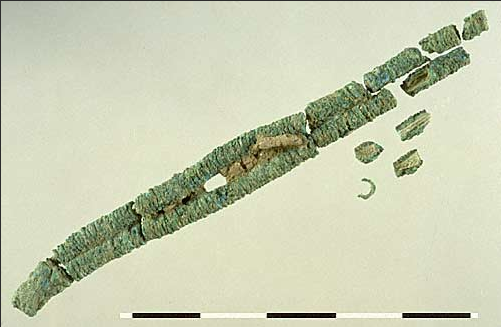Above: Coiled copper-alloy wire necklace discovered at Harappa in 2000 with traces of silk fibers preserved on the inside
The Indus Civilization, c. 2800–1900 bc, was one of the great urban riverine civilizations of the ancient world. Current understanding of this cultural phenomenon is that it emerged out of earlier diverse, regional cultures that interacted with each other economically and socially. Settlements of the Indus Civilization spread over a vast area, centred on the Indus and Ghaggar-Hakra river systems of Pakistan and northern India. From the Himalaya and Hindu Kush to the coastal regions of Kutch and Gujarat, westward into Baluchistan and eastward into northwestern India, sites identified with the Indus Civilization are distributed across an area larger than that of Mesopotamia or of Egypt.
Also included is a response to Ji-Huan He:
"We are grateful for the opportunity to hear readers’ views concerning our joint paper on
archaeological evidence for early silk in the Indus Civilization (Good et al. 2009), and are equally
grateful for the opportunity to respond to one particular reader’s comments on our findings: Mr
Ji-Huan He (2010), who writes ‘Silk is of China and China is of Silk’."

